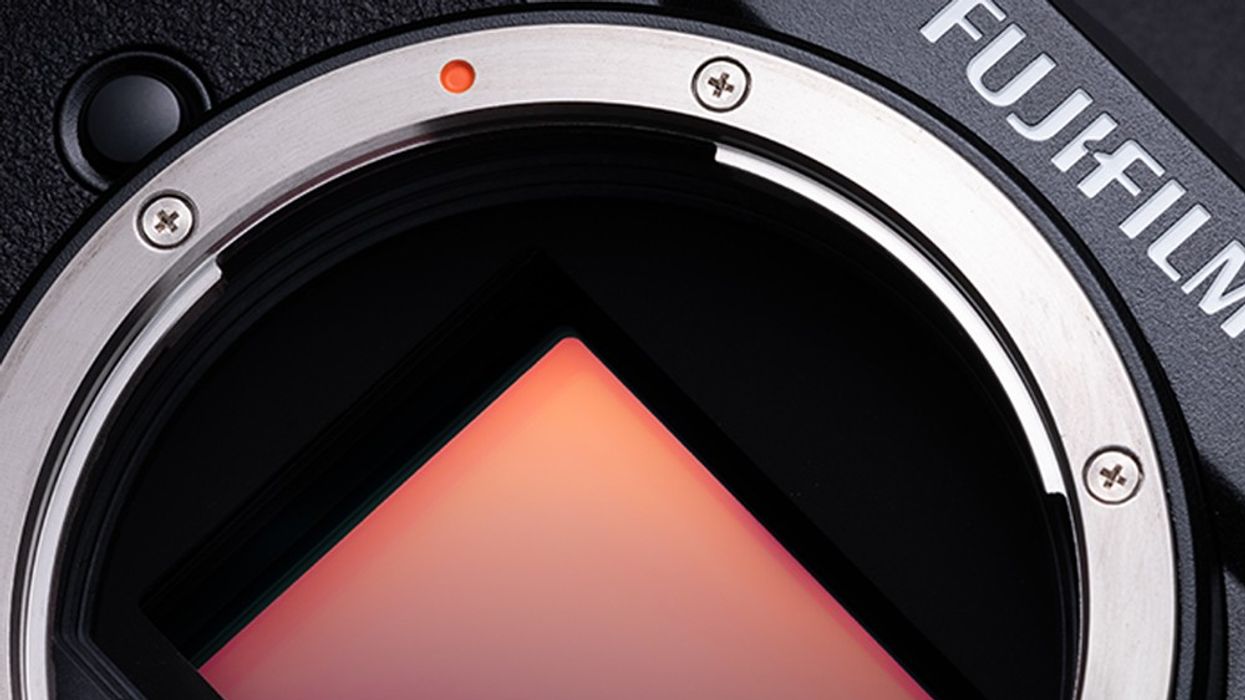Fujifilm Doubles Down on Skipping Full-Frame with the GFX100S
The GFX100S has made it clear that Fujifilm isn't headed toward full-frame sensors, and that's a good thing.

Fujifilm has made it very clear, both in public statements and in their model lineup, that they're comfortable doing their own, wonderfully weird thing. I shoot Fuji, so I have no qualms calling them "weird."
Did you see their commercial where Fujifilm throws some shade at rumor sites? Hilarious. They're doing their own thing for sure.
The company is still pushing hard with developments for the APS-C sized sensors, while the rest of the industry goes hog wild for full-frame (36 x 24mm) sensor sizes. With their popular but pricer medium-format GFX lineup, their plan on skipping full-frame altogether is a welcome attitude.
APS-C still makes sense for a lot of use cases for filmmakers. In the cinema world, Super 35 still reigns supreme with cameras like the ARRI Alexa, Blackmagic URSA Mini Pro 12K, RED DSCM2, and Komodo. Plus, there are centuries worth of lenses designed to cover the image circle to boot. Considering the results from the newest X-T4, many are impressed, and it goes to show how much APS-C will stick around.
Full-frame offers a lot of benefits in terms of increase in resolution and low-light image reproduction, but the camera bodies are generally larger, the lenses heavier, and the depth of field shallower. Worthwhile trade-offs for many, but not all.
Fujifilm appears to be saying with their lineup, "If you are happy with APS-C, stick with us, but if you want bigger pixels for more resolution, why stop at full-frame, why not go all the way to medium format?"
The GFX lineup wants to offer that solution for filmmakers.
When the original GFX100 was announced, it was designed around a 102MP (43.8 x 32.9mm) BSI sensor, a brand-new lineup of autofocus-capable G-mount lenses, and 4K video. With the addition of external ProRes RAW via Atomos, the first real "affordable" medium-format sensor for shooting video was born. This is nothing against Leica cameras, but in our tests, we were very happy with the results.One of the caveats with the GFX100 was that "affordable" price tag. At $10K, it costs more than every full-frame mirrorless camera available, the RED Komodo, the Canon C70, the Sony FX6, and even the URSA Mini Pro 12K. Because of that, it really hasn't taken off as a common film production tool.
However, instead of coming out with a full-frame mirrorless to compete with the Sony Alpha 1, a7S III, or the Canon R5, Fuji doubled down with the smaller, lighter, and more affordable GFX100S, giving creators medium-format filmmaking in the palm of your hand, or better yet, on a gimbal.
With the creamy medium-format resolution, the large sensor field of view, and the ability to work within more traditional setups, the GFX100S could be a really killer unit.
So why does it still only shoot 4K?
Well, I'm not on the design team, but if I had to guess, Fujifilm likely did their research and realized that the biggest thing they needed to get competitive with the other big players is a price point and body size, not resolution.
Similar to what Sony did with the a7S III last summer, Fujifilm focused on better 4K instead of focusing on higher Ks. Most people are still putting 4K TVs in their living rooms, so obsessing over 8K capture doesn't always make sense if there are sacrifices. Better 4K is more welcome than subpar 5K, 6K, or 8K.

In terms of its competitors, Fujifilm color science is one of our favorites alongside Canon. Fuji just looks better straight out of the camera with its rich, robust skin tones and accurate and pleasing neutral colors. On top of that, the cameras offer internal film simulations to match vintage or period looks. There are many jobs where I would choose a camera with better color over resolution. It's the whole reason the ARRI Alexa rocketed to the top despite its 2.5K resolution. The images look still better than a lot of the cameras today—resolution be damned.
When it comes to lenses, you're primarily going to be working with G-mount lenses. While there are LPL to G-mount adapters, there are very few still or cinema lenses that fully cover the 54.7mm image circle. The Leitz Thalia, ARRI Rental Prime DNA, and Panavision Primo 70 lenses come to mind.
That said, Fujifilm has staked a bold position for themselves, and the GFX100S tells us that they've cemented themselves in medium format as their next step in imaging. Only time will tell if shooters take to it.












